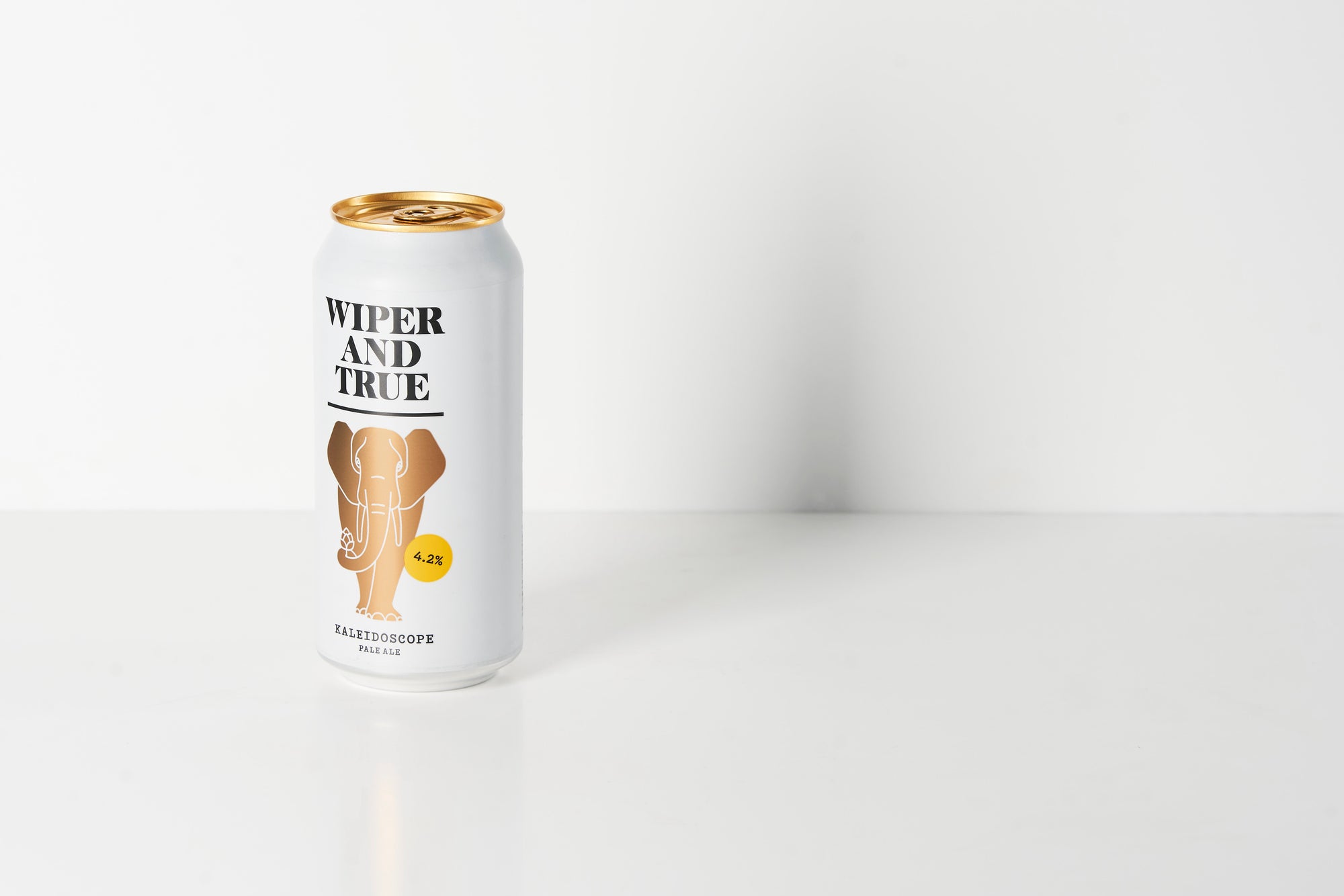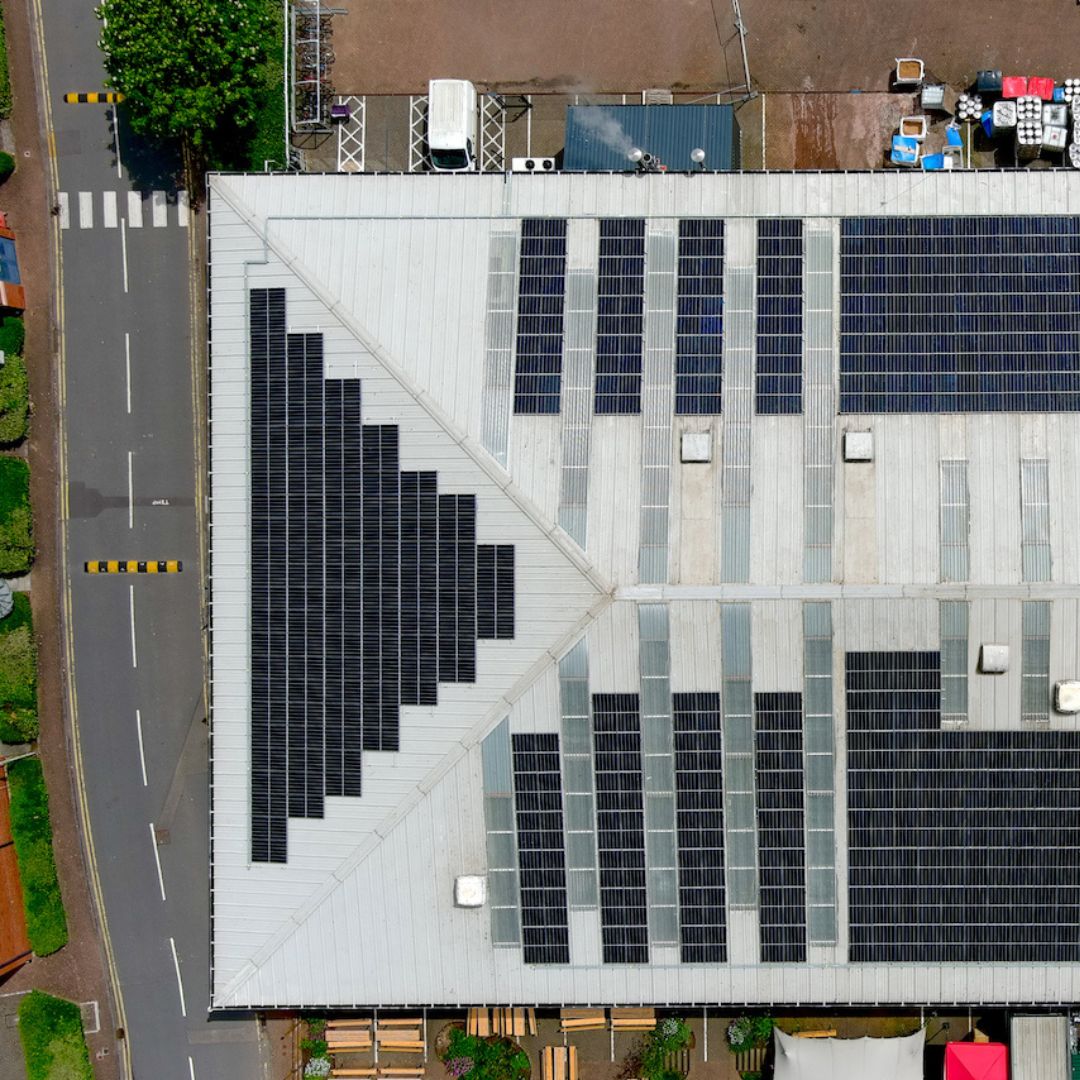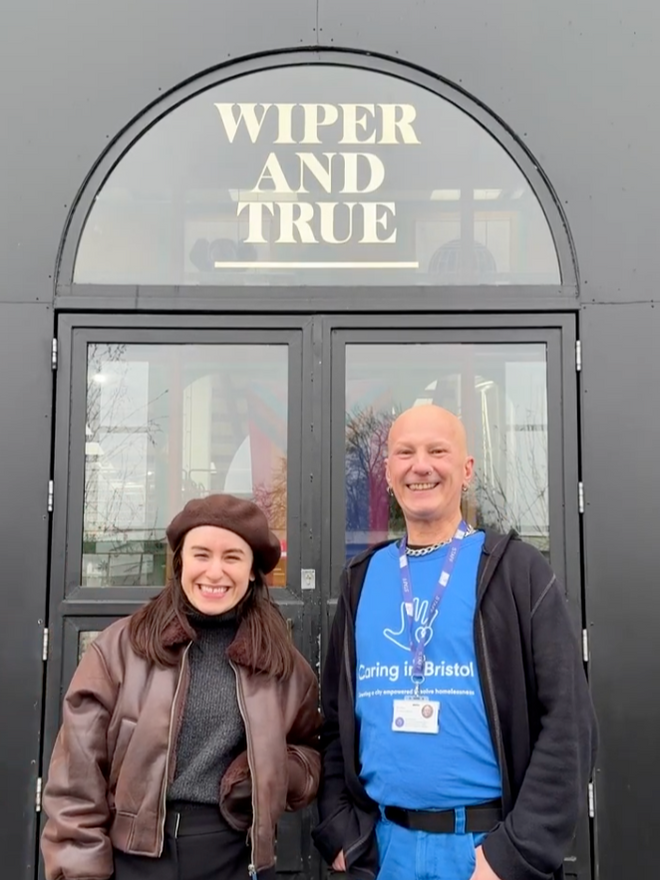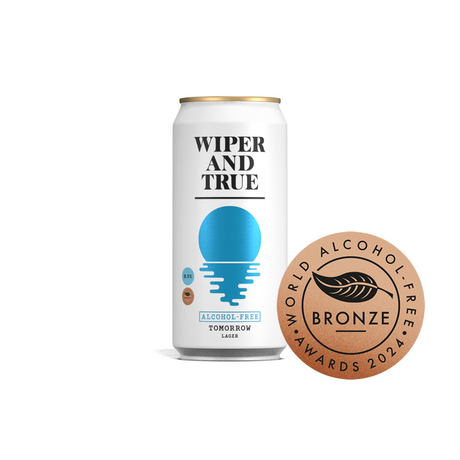We thought that Summer Solstice is the perfect time to reflect on, and share, our solar-powered progress. In March, we upgraded the solar panels on our Old Market brewery from a 39kW to a 159kW array, with the aim of becoming as electrically self-sufficient as possible.

The results so far…
April didn’t bring too much sunshine. Looking at the country as a whole, the Met Office described it as a “predominantly unsettled month…[but] sunshine was close to normal overall”. However, in the South West specifically, we saw between 70-90% less sun than we can usually expect at this time of year (all statistics taken from the Met Office). This resulted in 5.78 megawatts per hour of solar power production, which allowed us to be 30% self-sufficient on our overall electrical demand. It wasn’t a bad start to life with our newly expanded solar capacity, and left us feeling really hopeful for what a sunnier month would bring.
May was quite different. The South West experienced between 110-130% more sun than in previous years, and as a result our solar panels produced a whopping 19.83 MWh. This meant that our brewery and taproom were 63% powered by direct solar energy, and therefore 63% self-sufficient!
As a result, we only had to pull 6.15 MWh from the grid during May. This energy that we buy from the grid is sourced from our provider’s green energy tariff. The excess energy we generate from our solar panels when our own demand is low, but energy production is high, then gets transferred back to the grid.

OUR BEST DAY
Our single best day so far for solar power was Tuesday 30th May, with some very juicy stats:
- Produced: 906 kWh
- Consumed Directly: 338 kW
- Pulled from Grid: 86 kWh
- Self Sufficiency: 80%
June Progress
So far, June seems to have been an exceptional month for sun. We are currently 69% self-sufficient.

Longer Term Goals
So, how does our electrical self-sufficiency look over the course of a year? As we get closer to winter and have less sunlight, energy production will naturally drop. However, upon average, we are still expecting to have 50% of our electrical power coming from our solar panels. We are still looking for ways to improve this even further.
The data our current solar panels provide us with allows us to analyse our energy production, and in turn, make informed choices of the best investment for becoming more self-sufficient.
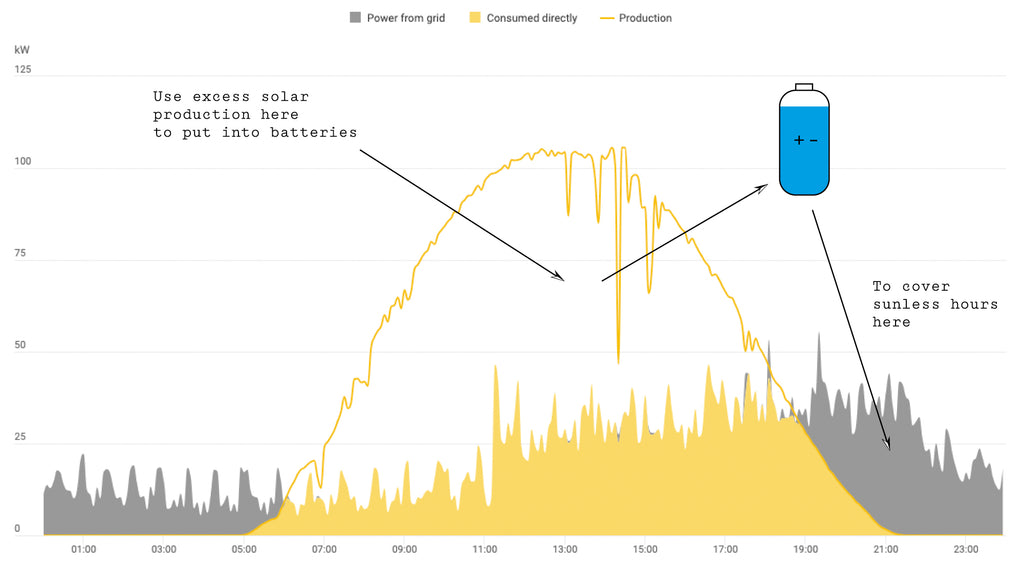
This graph, taken on a typically sunny day, shows that we are producing excess energy during the day, but a deficit at night. The best way to become as self-sufficient as possible is to match the demand curve with the production curve.
Investing in batteries to capture this excess could go someway to covering the electrical demand we have during sunless hours. Whilst batteries are a simple way to balance the energy discrepancy, we are also looking into smart micro grid systems, that analyse and manage our energy demands over a 24 hour period. Watch this space!
Here’s to the beautiful sun, a more sustainable brewery and a very happy summer solstice!
